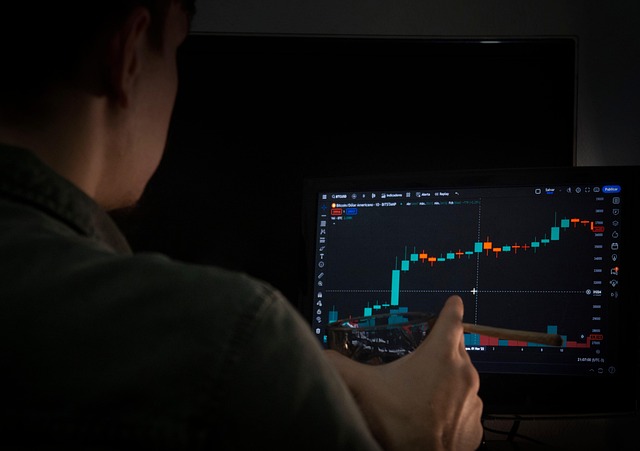Why Altcoins Deserve a Closer Look
Bitcoin grabs the headlines, sure. It’s the name most people recognize, and for good reason—it’s the original and the anchor of the crypto market. But beneath the Bitcoin spotlight lies a deeper layer of innovation and potential: altcoins. These alternative cryptocurrencies are where real experimentation happens, and in many cases, they’re the ones pushing blockchain’s boundaries.
Altcoins now make up close to 40% of the total crypto market cap. That’s not small change. Ethereum leads this second wave, supporting everything from decentralized finance to NFTs. But it doesn’t stop there. Cardano, Polkadot, and Solana are building new foundations for speed and scalability. Projects like Chainlink and The Graph power the infrastructure that many dApps depend on.
Use cases? They’re wide-ranging. Smart contracts automate transactions without middlemen. Privacy coins like Monero and Zcash offer confidentiality in a way Bitcoin never could. Other altcoins focus on cross-border payments, supply chain transparency, decentralized storage, or even play-to-earn gaming models.
Bottom line: if Bitcoin is digital gold, altcoins are the Swiss Army knives of the crypto world. There’s a lot more to see once you look past the marquee.
Core Criteria for Evaluating Altcoins
When it comes to altcoins, shiny branding means nothing if the foundation is weak. Here’s what actually matters:
Utility Good projects solve problems. Period. Whether it’s enabling faster cross-border payments, improving privacy, or supporting decentralized apps, ask: does this coin actually do something useful—or is it just riding hype?
Team & Development Activity A project is only as strong as the people behind it. You want active GitHub repos, consistent commits, and a clear roadmap. Leadership should be public and credible. Ghost teams and vague promises are bad signs.
Tokenomics Supply and distribution make or break long-term value. Watch out for massive pre-mines, sketchy allocations, or inflationary models with no utility. Sustainability is key. Solid tokenomics balance reward, function, and scarcity.
Security & Transparency Many altcoins have imploded because of sloppy code or deliberate scams. Look for open-source projects with third-party audits. If the code is closed and the team won’t talk security, move on.
Community & Ecosystem Growth Real users and builders—not just price watchers—are the lifeblood of a healthy project. Are people actually using it? Are there third-party tools, integrations, and conversations that go beyond price charts? Hype alone fades. Utility plus community sticks.
Evaluate these five things, and you’ll cut through most of the noise.
Market Timing and Trend Awareness
Altcoins don’t exist in a vacuum—they ride the tides of broader shifts in the crypto space and beyond. When institutional investors lean into blockchain infrastructure, or when global economies flirt with inflation and regulation, the market reacts. And that reaction steers the spotlight. In 2024, it’s not just about being early to a coin—it’s about being early to a narrative.
Right now, momentum is building around Layer-2 solutions, especially with Ethereum’s mainnet still facing scale limitations. Projects streamlining transactions and reducing fees are gaining real traction. Add in the next chapter of DeFi—focused on interoperability and real-world asset integration—and another wave may be brewing. NFTs, once written off, are quietly evolving with utility-based use cases, from ticketing to identity. The smart money watches sectors, not just tokens.
But here’s the trap: short-term hype cycles. They’re brutal. A meme coin can triple in 24 hours and fall just as fast. If you’re basing moves on Twitter trends or influencer TikToks, you’re not investing, you’re gambling. Chasing pumps becomes expensive quickly. The goal is to spot a sector heating up before it’s fully lit—not after it’s already on fire.
Stay grounded. Watch the macro, follow development, and track traction—not just price.
Risk Management Tactics
Investing in altcoins isn’t just about spotting the next big thing—it’s about managing your capital wisely. Even the most promising projects involve risk. Strategic risk management is what separates investors from gamblers.
Smarter Portfolio Allocation
Going all-in on a single altcoin might sound exciting, but it’s rarely a smart move. Diversifying your crypto portfolio reduces your exposure to project-specific failures and market volatility.
- Stick to allocation limits: Never allocate more to altcoins than you’re willing to lose.
- Diversify by category: Spread your investments across sectors (DeFi, Layer-2, gaming, etc.) to mitigate risk.
- Use tiers: Allocate more to proven altcoins, and cap your exposure to speculative picks.
Exit Strategies: Know When to Move
Profit isn’t profit until it’s realized. Set goalposts early, and don’t let emotions dictate your next move.
- Pre-defined profit targets: Set ranges where you’ll take partial or full profits (20%-50% gains, for example).
- Stop-loss disciplines: Protect your downside with limit orders or alerts when prices fall below key thresholds.
- Reinvest or rebalance: Routinely shift profits into stable assets or stronger projects as your portfolio matures.
Staying Informed Without Overload
Crypto moves fast—and staying informed doesn’t mean consuming every tweet thread or TikTok explainer.
- Follow trusted sources: Limit your research to a few reliable newsletters, blogs, or analysts you trust.
- Use tracking tools: Platforms like CoinGecko, Messari, and DeFiLlama can help you monitor developments efficiently.
- Set information boundaries: Avoid information fatigue by scheduling specific times to check on the market.
When you approach altcoin investing with a tactical plan, you give yourself the advantage of clarity and resilience—even in unpredictable markets.
Bonus: Pro Tips from Experienced Investors
What Real Crypto Analysts Look For
Seasoned crypto investors don’t rely on hype or influencer tweets. Instead, they apply a systematic lens to evaluate emerging altcoin projects. Here are a few essential elements they investigate:
- Clear Use Case: Does the project address a real-world problem or fill a gap in the crypto ecosystem?
- Strong Development Team: Transparent, accessible leadership with proven experience in blockchain or tech sectors.
- Consistent Development Activity: Frequent GitHub commits, active bug fixes, and a dynamic project roadmap signal longevity.
- Partnerships & Integrations: Collaborations with reputable companies or blockchain platforms show real-world traction.
- Token Utility: Analysts examine how the token is used within the ecosystem—mere governance isn’t always enough.
The Myth of Early Access
Getting in early sounds great—but it doesn’t guarantee profits. Many pre-launch or seed-round tokens fail to deliver long-term value. Here’s why:
- Vesting Schedules: Early investors may face long lock-up periods that limit quick gains.
- Overvaluation at Launch: Hype can inflate token prices before the project proves itself.
- Lack of Product-Market Fit: Even with funding, a project that doesn’t meet market needs can stagnate.
Early access only works if the fundamentals are strong and the timeline to execution is reasonable.
Common Red Flags to Watch
Know when to walk away. Avoiding obvious warning signs can save you from painful losses:
- Inactive Developers: Long periods with no code updates or community engagement suggest abandonment.
- Anonymous Teams: While privacy is respected in crypto, a fully anonymous team raises accountability concerns.
- Vague or Fluffy Whitepapers: If the whitepaper lacks technical detail or clearly defined goals, it’s a bad sign.
- Empty Hype: A lot of social buzz with little technical or ecosystem development should raise red flags.
A disciplined approach helps filter the noise and focus on real opportunities. Learn to evaluate critically, and don’t be afraid to skip projects that don’t meet essential criteria.
Want to Go Deeper?
Once you’ve got a grip on altcoin fundamentals, it’s time to sharpen the edge of your strategy. Navigating this space isn’t just about picking promising coins—it’s about knowing when to move, how much to risk, and when to walk away. Having a broader investment strategy keeps you grounded, especially when markets get noisy or your gut starts telling stories.
The best investors build habits: they track metrics, journal decisions, and study the patterns behind price action. But they also diversify across approaches. Maybe that means staking some tokens, dollar-cost averaging others, and using stop-losses where risk runs high. Locking in profit isn’t defeat—it’s defense. And knowing how to spot momentum early is about staying mentally sharp, not chasing hype.
To go beyond the basics, check out Top Strategies for Successful Cryptocurrency Investing. It walks through practical frameworks you can use to structure your crypto game without relying on luck or Twitter calls.
Final Word
Altcoins are where ambition meets volatility. The gains can be big—but so can the losses. That’s why strategy matters more than noise. You’re not just picking coins, you’re managing bets in a market that changes by the hour.
The truth? Most short-term pumps are dead ends. The smarter play is staying informed, keeping your risk in check, and waiting out the swings. In crypto, discipline beats guesswork. Treat this space like a war chest, not a casino.
Build your thesis. Revisit it often. Watch the market. And most importantly, keep your emotions out of your portfolio. Learn faster than the hype cycle—and you’ll still be here when the trend chasers burn out.

 Founder & Editor-in-Chief
Founder & Editor-in-Chief
